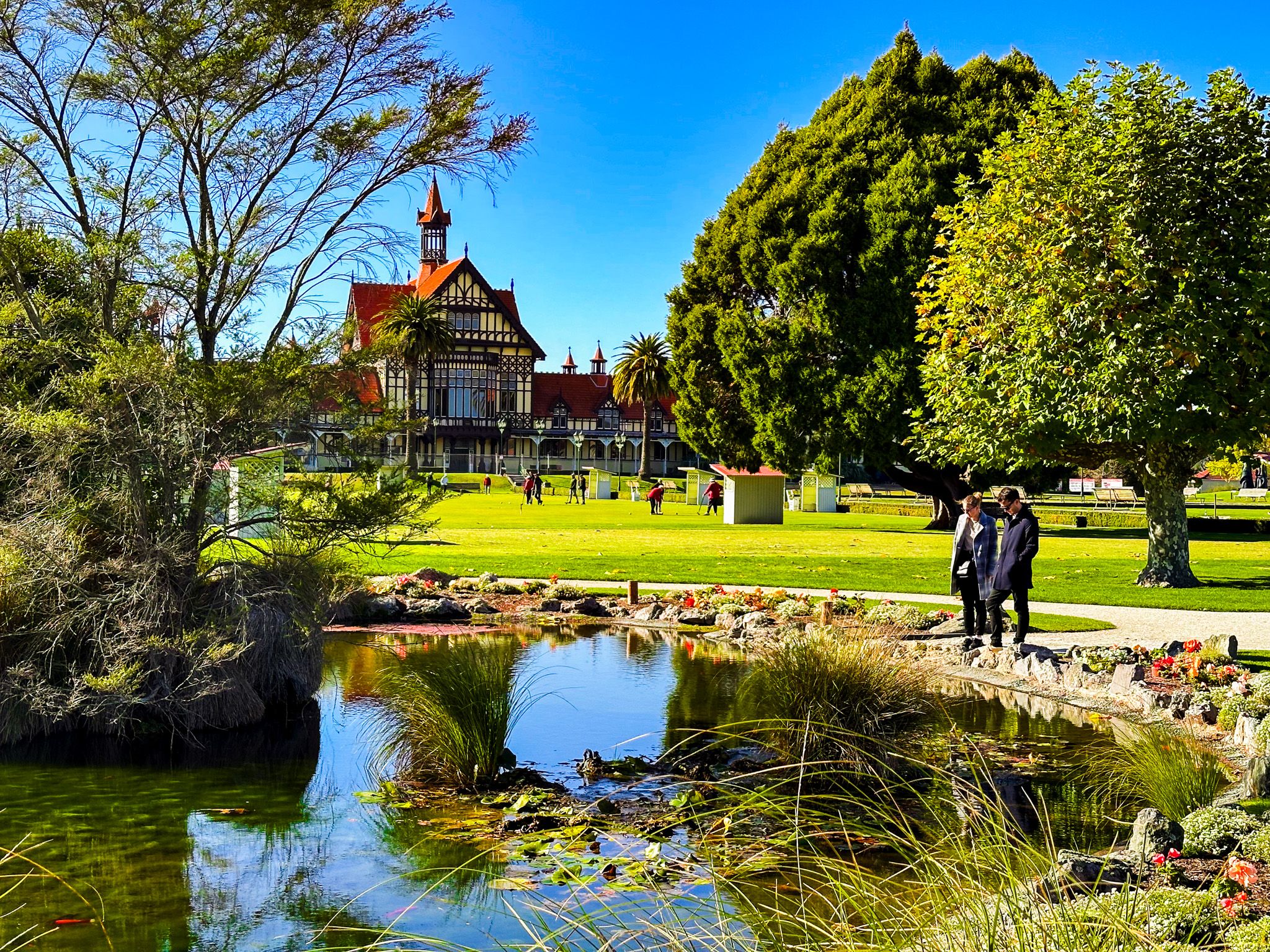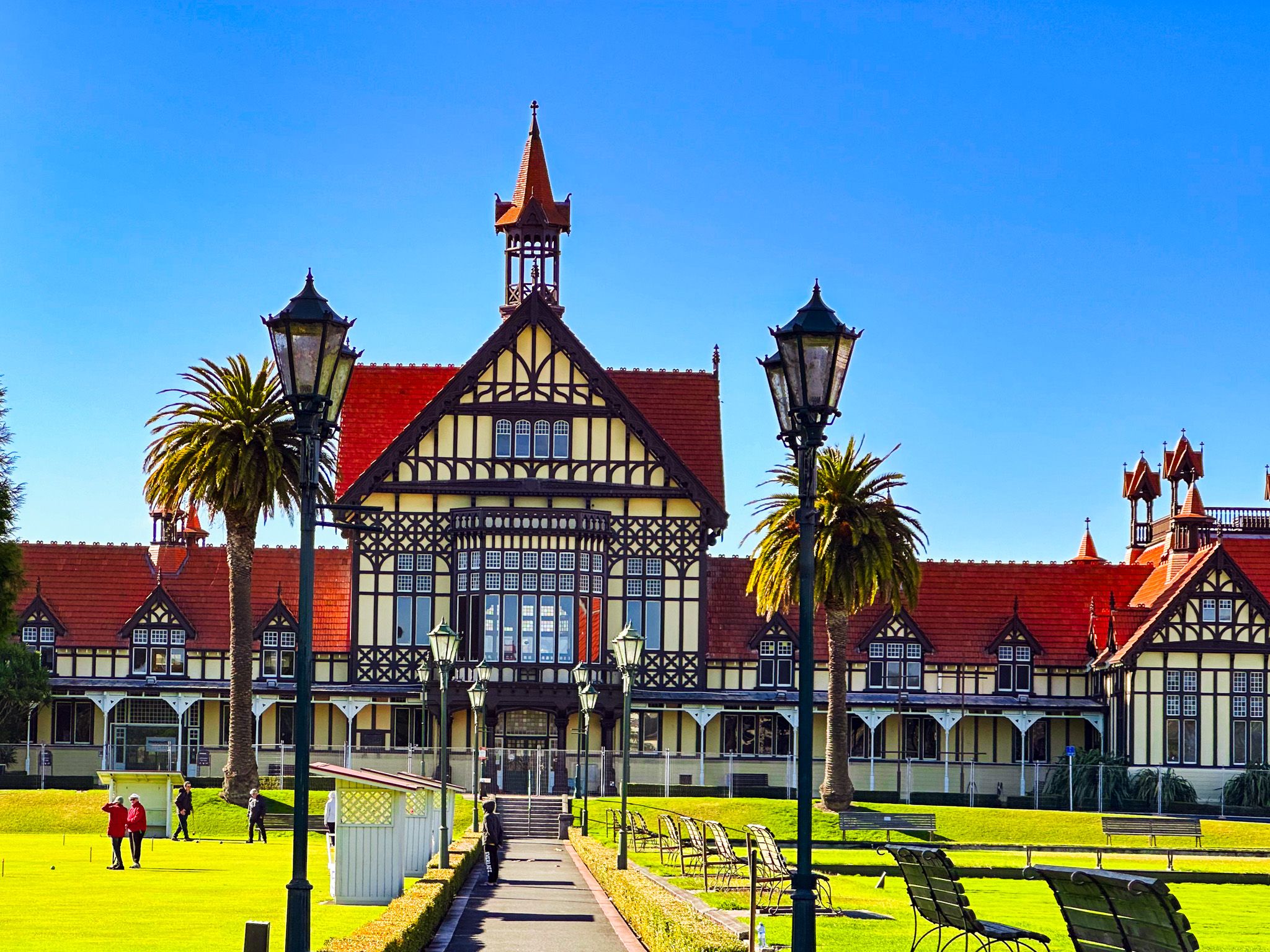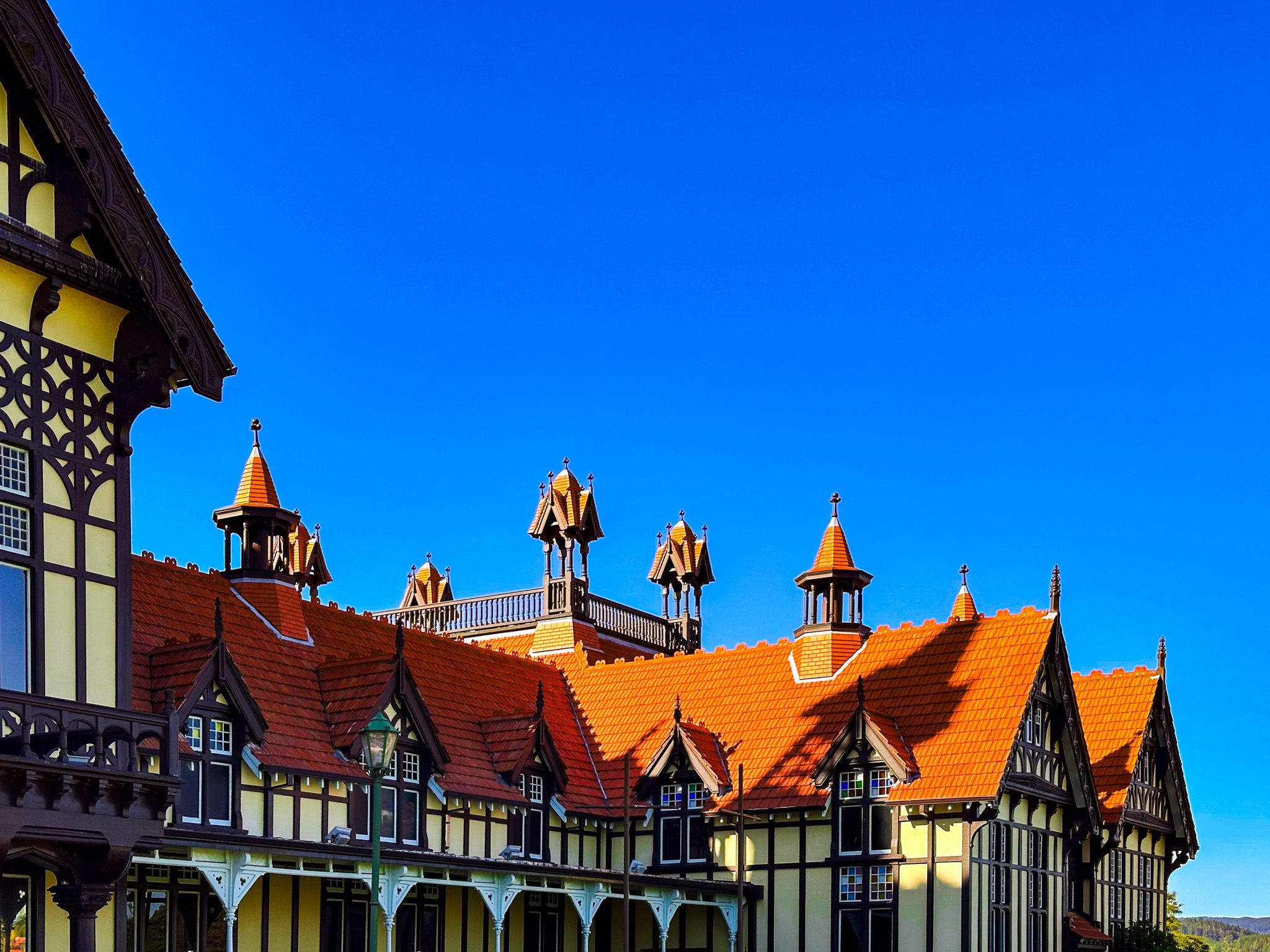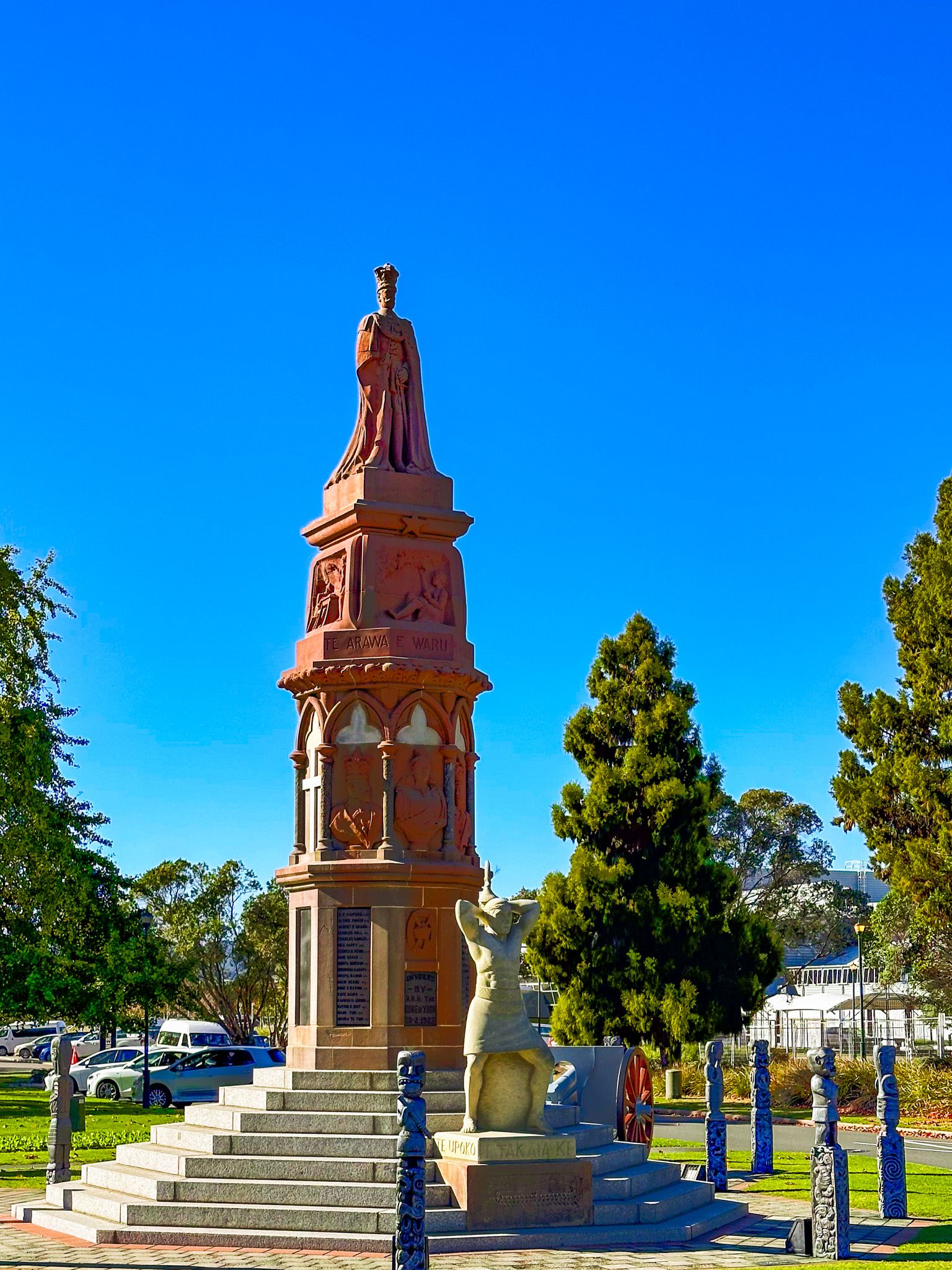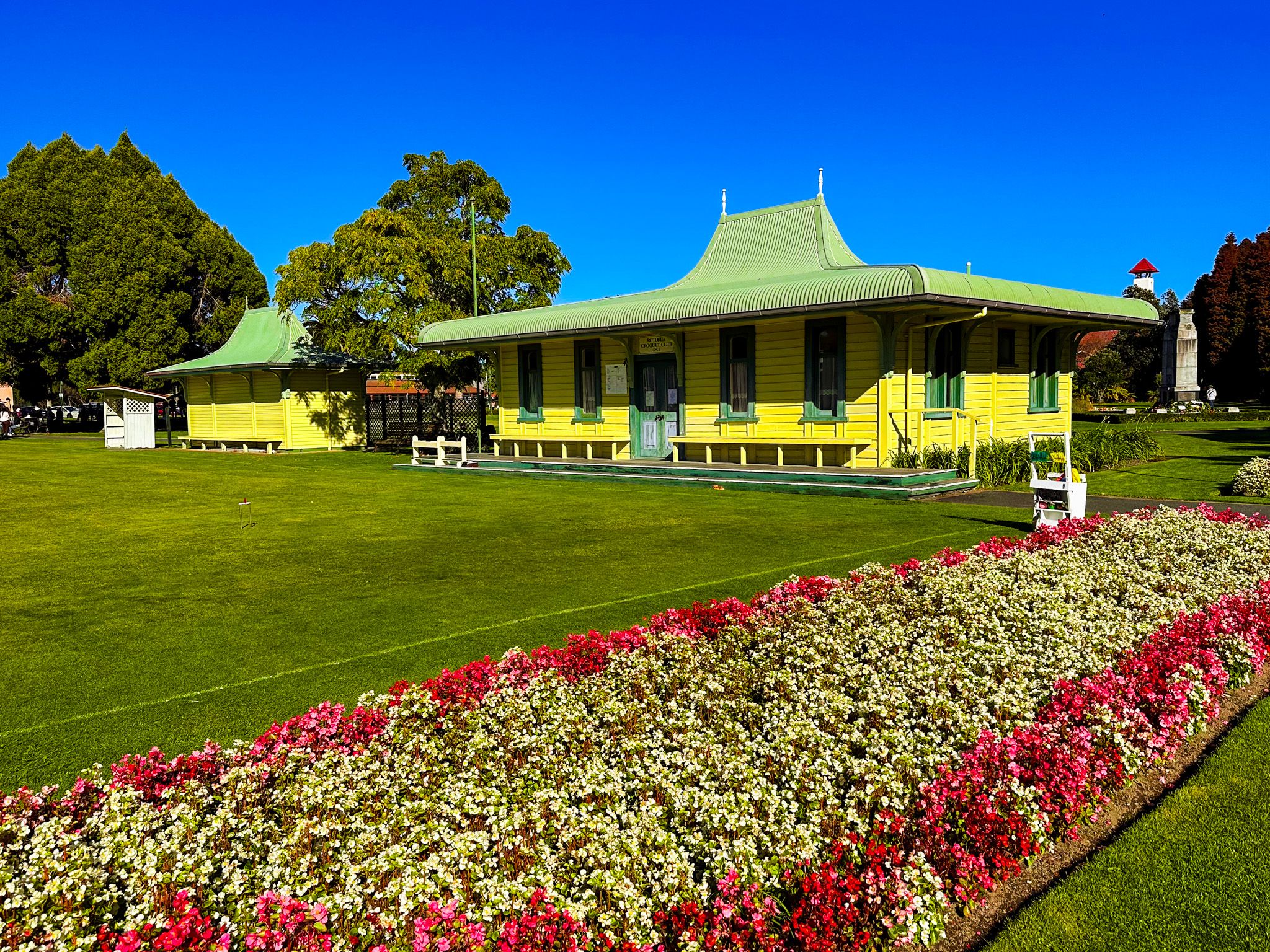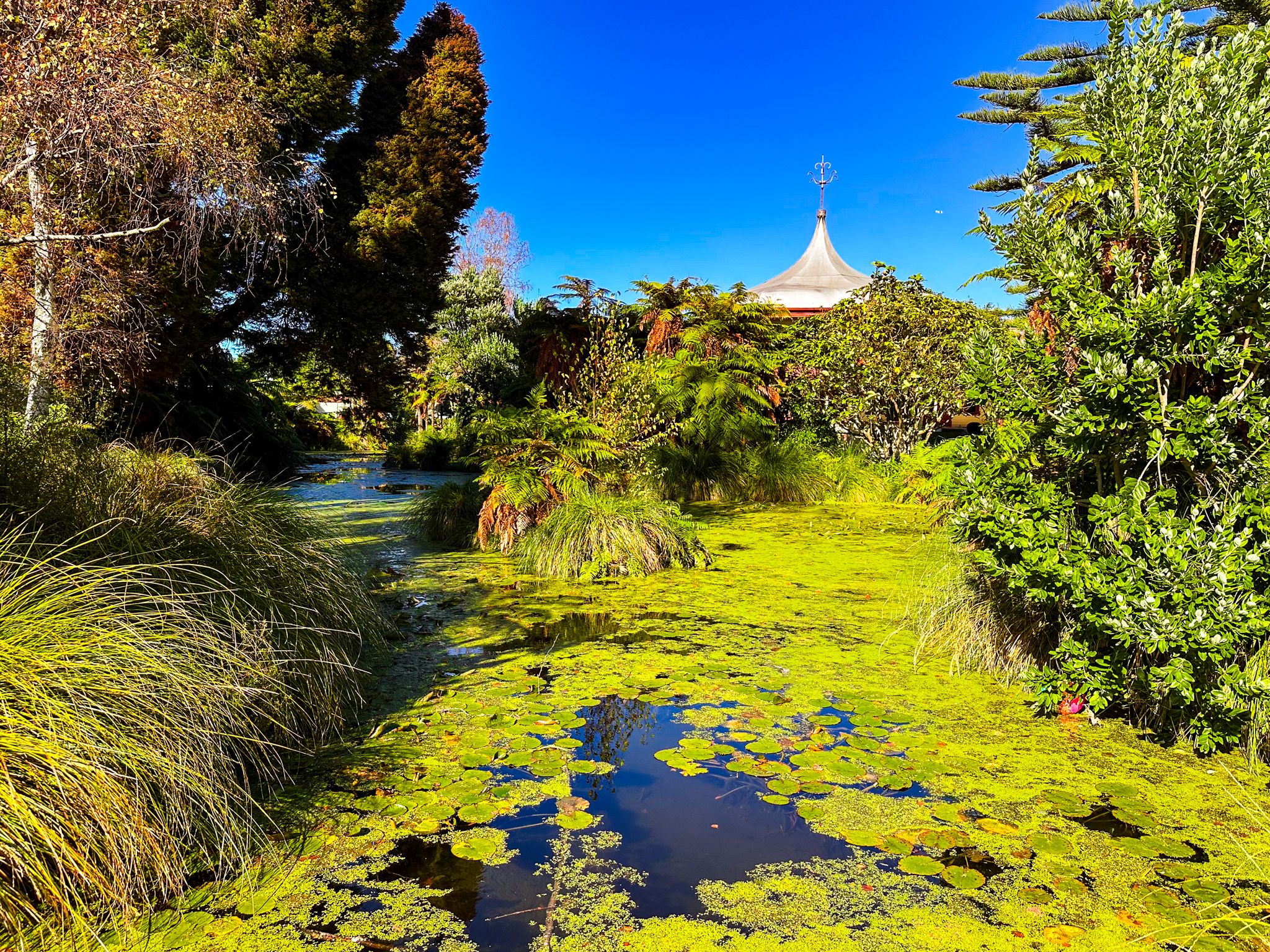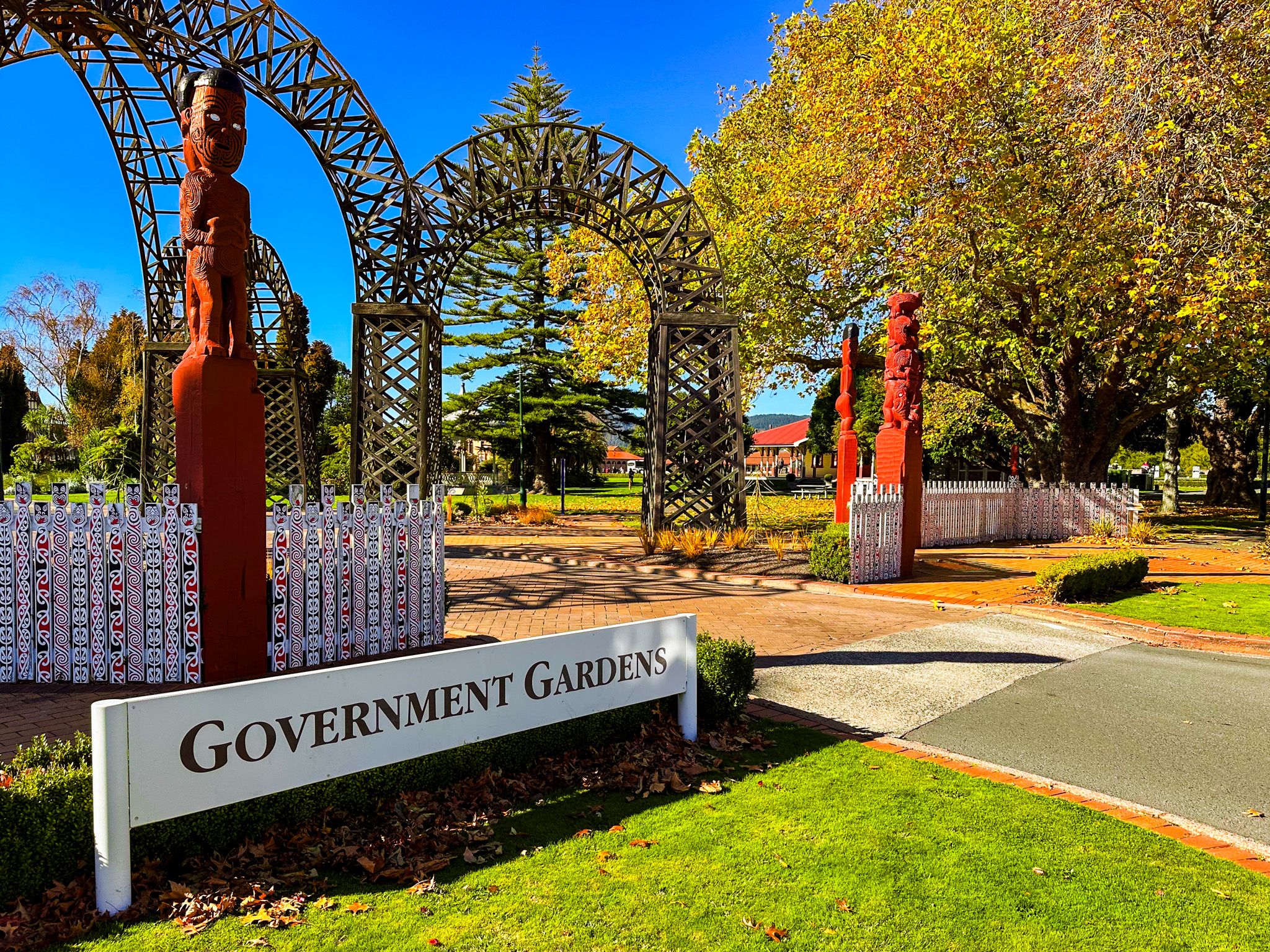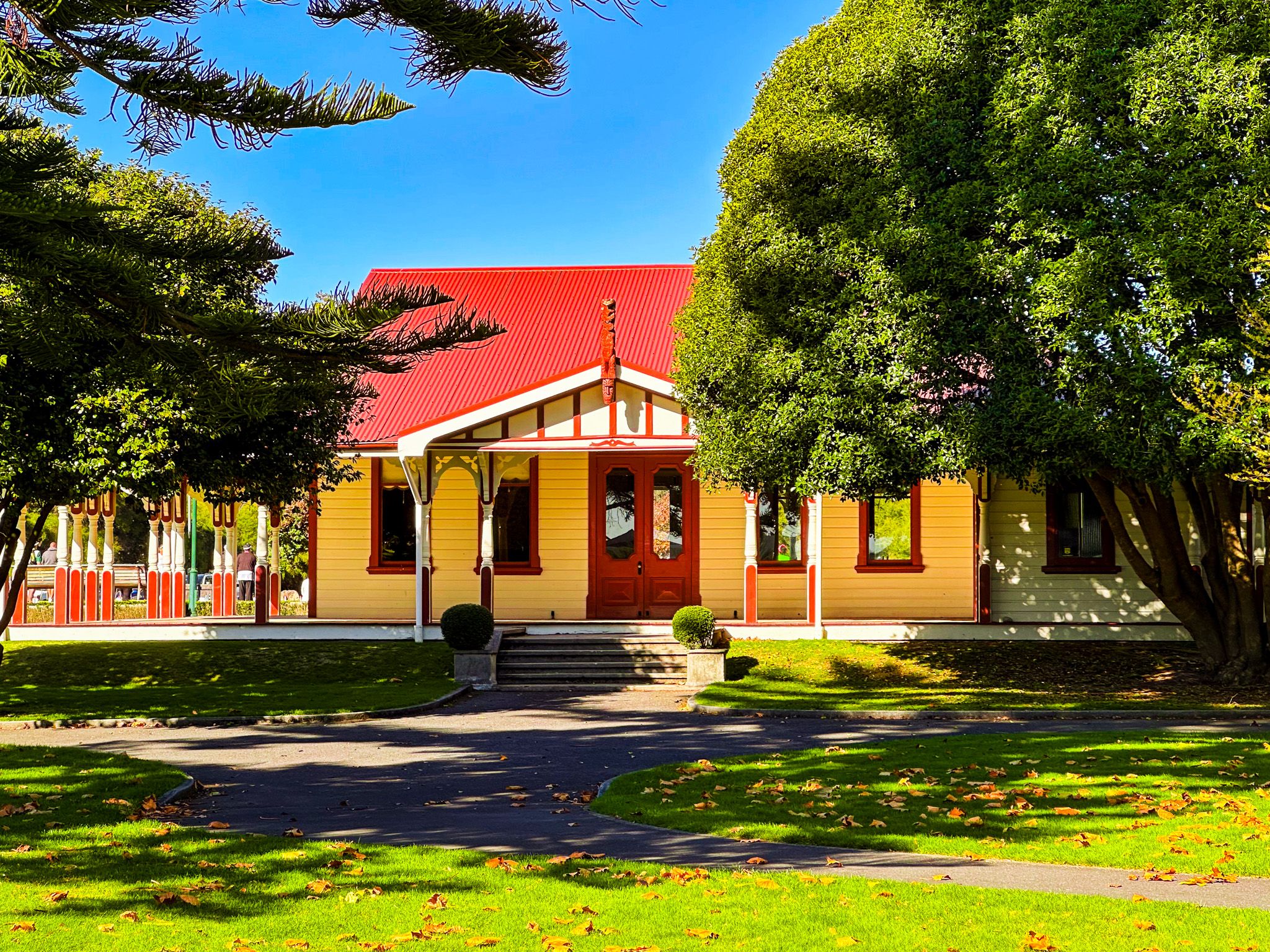Government Gardens is a large park between downtown Rotorua and the lake. Hinemaru Street bounds it to the west, and Hatupatu Drive to the southeast. Arawa Street, which runs through downtown from west to east, becomes Queens Drive within the park. There is plenty of parking on Queens Drive.
As the name suggests, it was developed by the NZ government as a tourist attraction in the late 1800s. The development was made possible by local Te Arawa Māori, who gave 50 acres to NZ for use as a park in the late 1800s. Part of the site was named Paepaehakumanu, which was mainly used for bird snaring, and part was Motutara. The area was also the site of pre-European battles.
The government’s first investment in the NZ tourism industry was a bathhouse powered by thermal water. This building was completed in 1908 and is the big Mock Tudor building at the park's east end. The Blue Baths were built in a Spanish Mission style and opened in 1933. There was much fuss as mixed bathing was allowed! Both buildings have since had periods of closure and renovation. The Blue Baths were closed in 1982 but restored for bathing in 2000. The 1908 baths were closed for bathing in 1966 and renovated as Rotorua Museum in 1995. It is presently closed for further renovations but still presents a stunning site from various viewpoints around the gardens.
When the first baths were developed, the park was known as Sanatorium Reserve, but Government Gardens became more common with other facilities, including large grassed areas, bowling greens, and a croquet lawn. There is the inevitable bandstand at the west end, a couple of pretty ponds, various flower gardens, and three war memorials. The most substantial memorial is the Arawa Memorial, which was added after WWI.
The extraordinary Princes Arch is at the west end and main park entrance on Arawa Road. This latticework was designed by Captain A.C. Turner and built from native timbers by Alfred Warbrick around 1900 for the visit of the Duke and Duchess of Cornwall and York (later King George V and Queen Mary) to Rotorua. Subsequently, part of it was retained for the park entrance. Although it has been subject to many repairs, it continues to stand the test of time. Another feature of the west entrance is the dark red pou. These were carved by Tene Waitere and added in 1907. Waitere was a master carver and internationally renowned during his lifetime.
